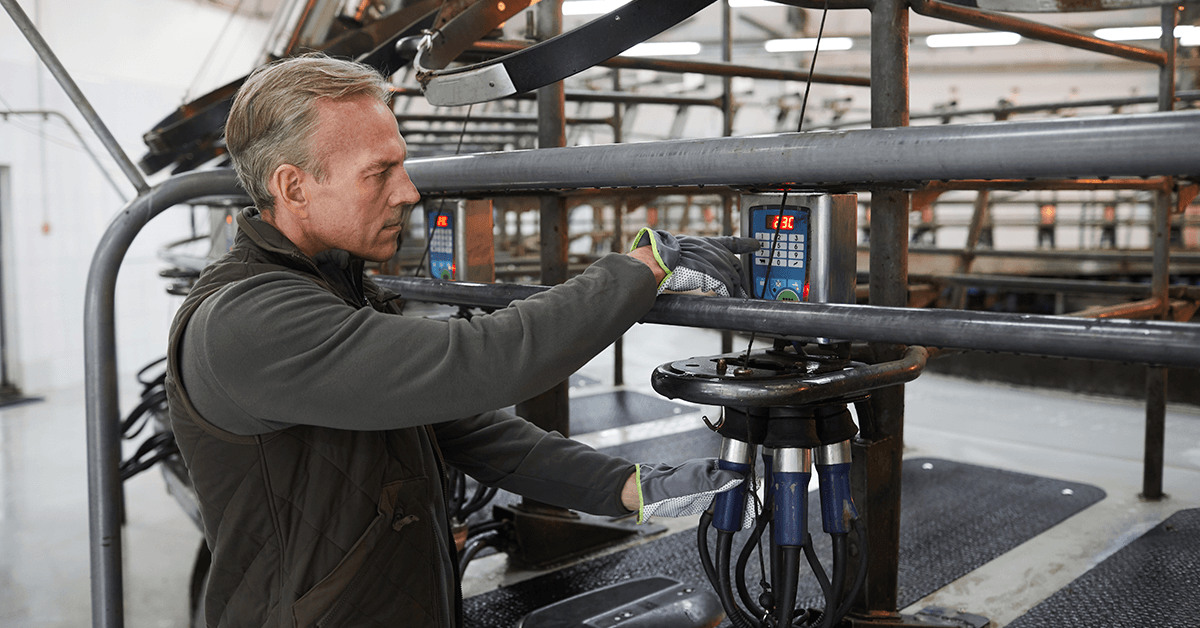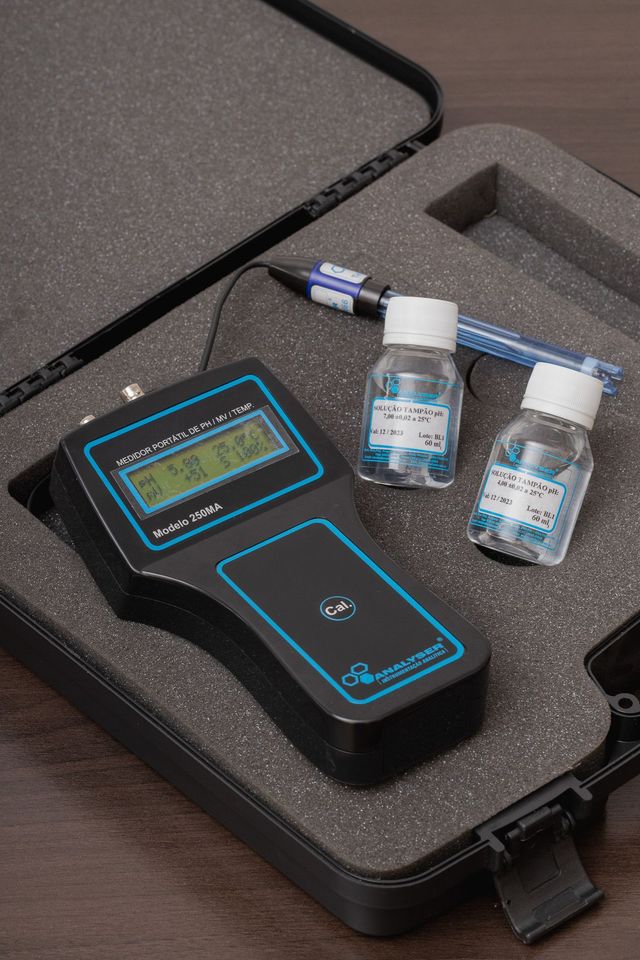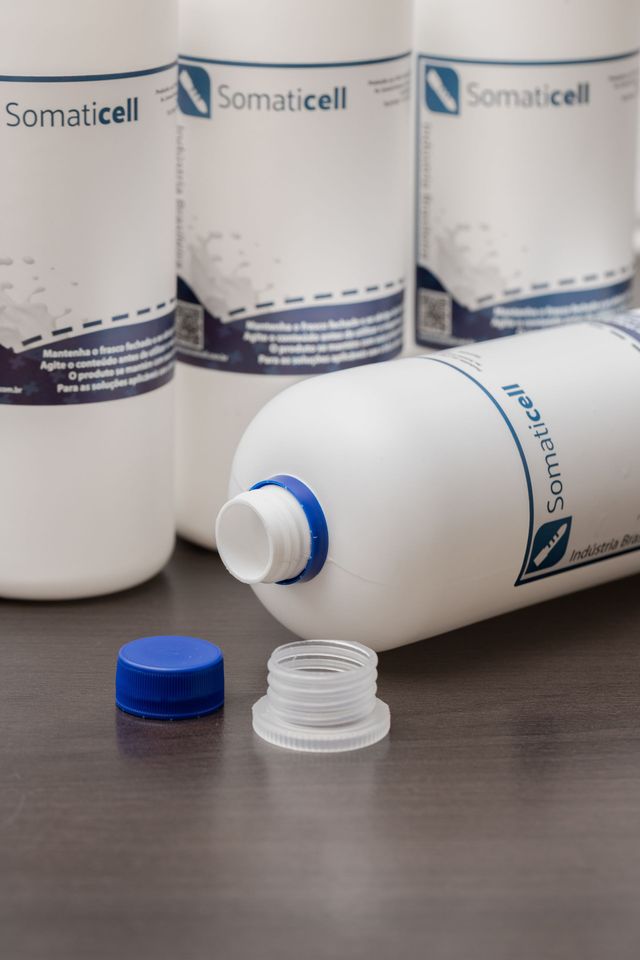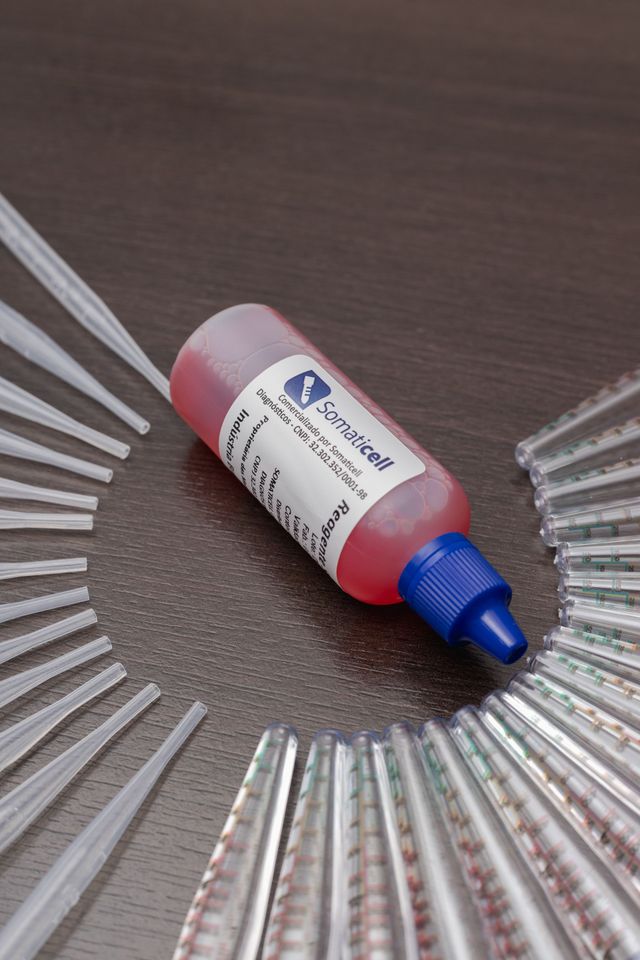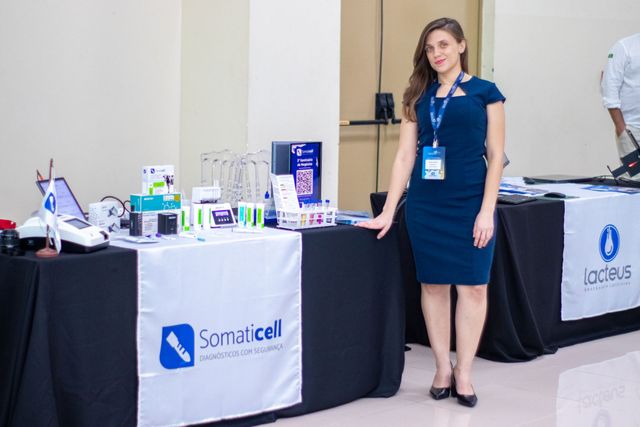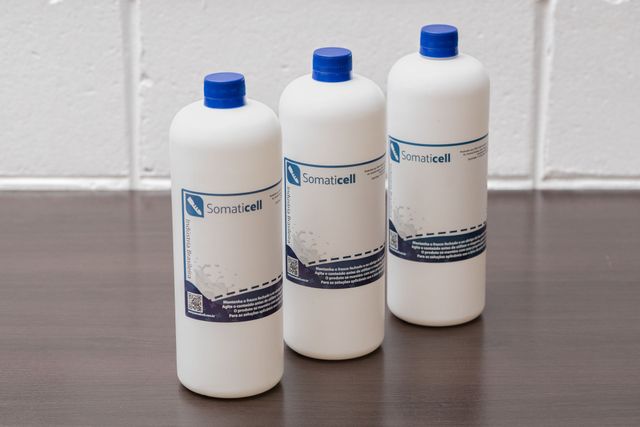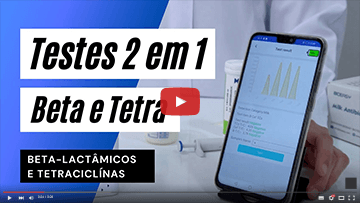How to control bovine mastitis?
No time to read? Listen to the narration of this article in Portuguese:
Cultivating good practices in the production system is essential to prevent these problems.
Herd health is one of the main concerns among dairy farmers. The apprehension is not for nothing, after all, the preservation of the teats of dairy cows is essential to guarantee a plentiful and quality milk. In short, one of the main problems that interfere with the quality of milk is bovine mastitis, and you need to find out how to control it!
The disease, which appears through inflammation of the mammary glands, makes business difficult, causing loss of milk production, quality impairment and even death of the animals.
Para exemplificar, de acordo com a Embrapa, um rebanho infectado com mastite pode reduzir a produção do leite até 70%. Inegavelmente, é uma redução bastante expressiva.
In this context, cultivating good practices in the production system is essential to prevent these problems. However, even with prevention strategies, the problem often arises.
Therefore, it is important to understand what measures to take to control the condition, preventing a greater number of contaminated animals and financial losses.
E você, sabe como controlar essa doença? Entende quais práticas devem ser adotadas em um rebanho infectado? Nesse texto, veja como é possível controlar a mastite bovina, entenda quais são os fatores principais das causas de infecção e conheça os padrões a serem seguidos, para prevenir o contágio.
Follow the topics and see the content we have prepared on the subject:
- Bovine mastitis: what is it and why does it occur?
- How to diagnose mastitis
- Main reasons to prevent and control the disease
- Tips for controlling and treating mastitis
- How does dry cow therapy help?
- Monitor your herd frequently
Bovine mastitis: what is it and why does it occur?
Bovine mastitis is a disease that causes inflammation in the mammary glands, and can be classified into two types: clinical mastitis or subclinical mastitis.
Such a disease can be caused by allergies, metabolic factors or by infection, the latter being the most common cause. Infections are caused by contagious or environmental agents.
Contagious agents promote infection from one cow to the other during milking, between the mammary quarters, both through the use of poorly sanitized equipment and the lack of cleanliness in the milker's hands.
In cases of contagious mastitis, microorganisms settle in the mammary gland, causing persistent infections, but without serious symptoms.
In turn, environmental agents come into contact with the animal through the environment in which it lives. They are usually present in water, manure or clay. One of the main agents is fecal coliforms, which manage to enter the udder and multiply.
As alterações causadas pela doença levam a mudanças físico-químicas no leite. Na maioria dos casos, quando não há um controle adequado, a mastite clínica pode causar a perda do teto, por conta da fibrose. Em casos ainda mais severos, o animal pode morrer.
But even if clinical mastitis has a more latent condition, the subclinical disease ends up causing greater financial impacts. Because, as its form is silent, it can spread, reducing the quality and quantity of milk.
In this sense, early diagnosis is essential, as it ensures rapid adequate treatment and prevents the disease from spreading, causing other problems.
In the next topic, see how the diagnosis of this disease is made.
How to diagnose mastitis
One of the ways to control and prevent the spread of bovine mastitis is through a previous diagnosis and in an agile way. Thus, carrying out regular inspections on dairy cows, applying tests with safe and effective identification, is a measure that greatly improves problems with the disease.
The method for diagnosis will depend on the classification of the mastitis. In cases of clinical mastitis, it is easier to identify, as it can be detected through visible changes in the milk, such as lumps, clots and changes in the color of the raw material.
Furthermore, there are also noticeable changes in the teats of the infected cow. The most common are swelling and redness.
In contrast, subclinical cases are imperceptible to the naked eye and may go unnoticed for a long period.
Dessa forma, para o diagnóstico de mastite subclínica, é necessário a realização de análises como a CCS (Contagem de Células Somáticas).
Cows that have CCS greater than 200.000 per mL are considered to have subclinical disease.
After the diagnosis of subclinical mastitis, it is interesting to know the profile of the agent that is causing the infection.
For this, the microbiological culture of milk represents a fundamental tool to identify pathogens. Through this identification, the best treatment can be chosen.
Main reasons to prevent and control the disease
A mastite é a doença que mais causa perdas econômicas no sistema de produção de leite, de acordo com a Embrapa.
This is because, in addition to allowing the disposal of milk, the disease requires a commitment from the producer to invest in treatment and control.
Among the costs are drugs for the treatment of clinical cases, disposal of animals with early death, labor of professionals specialized in the subject and reduction of production, due to the number of infected cows.
Not to mention that the treatment of mastitis involves the use of antibiotics, which can bring risks of residues in milk, compromising the quality of the product and its derivatives.
The interference in this quality happens because microorganisms that are classified as lactic acid bacteria are no longer beneficial when they are in large quantities. Thus, there is an increase in lactic acid, a product of the metabolism of lactose by these microorganisms.
Thus, the pH of the milk is affected, causing the precipitation of caseins. This interferes with coagulation and sensory characteristics, especially with milk thermoresistance.
Consequently, the process interferes with the pasteurization carried out in the industry, making the raw material of low value.
In the same context, psychrotopic bacteria increase the problem, since their multiplication can occur at low temperatures, reducing the shelf life of dairy products, bitter taste in milk and increasing the viscosity of the product.
All these problems derive directly or indirectly from mastitis, as some of them are caused by a lack of hygiene in facilities, milking and equipment.
Tips for controlling and treating mastitis
Now that you already know how mastitis occurs, the main factors for its appearance and the damage caused by it, see the tips that we have separated to help you control this disease.
To achieve success in this task, it is essential to keep in mind which preventive measures are more than necessary for a successful business.
Therefore, always map the points of improvement in your creation environment. Understand the stage of each process and the need to enhance quality in the daily handling of animals. In prevention, you can prioritize the following factors:
Investment in animal comfort and hygiene
The environments where the cows stay need constant maintenance, with cleanliness, without excessive humidity and with comfort. All care in this environment is valid, as dirty resting places are a source of risk for intramammary infections.
Proper milking routine
Milking management needs to be done efficiently and without risk of new infections. Therefore, when milking the teats, they need to be clean and dry with disinfection using a specific solution and drying with a paper towel, before and after milking.
Treat clinical cases of mastitis with care
Analyze the situation of your herd so as not to have even greater commitments to your business.
Perform proper maintenance and cleaning on milking equipment, repeating the process when leaving for another animal
These materials require frequent periodic checking, with correct sizing and washing and disinfection soon after use.
Provide proper training to farm staff
Knowing the factors that harm the health of the herd is a key point in this process. In this, everyone involved needs to be aware of good practices to prevent mastitis.
These are the main factors to prevent the incidence of mastitis among dairy cows. However, if you are already suffering from many cases and need control, the ideal is to implement a specific treatment.
One of the solutions is the use of antibiotics, but it is important to evaluate the period in which the treatment will be carried out, as this may reflect on the result. Thus, the period in which the results are most satisfactory is during drying.
How dry cow therapy helps control bovine mastitis.
Dry cow therapy is the best form of control after detected subclinical mastitis. It is during this period that the use of antibiotics is ideal, acting to eliminate existing intramammary infections.
In the same sense, it helps to prevent new cases of mastitis after drying and in the postpartum period.
But analyzing only the period is not enough. It is necessary to analyze the type of antibiotic that you will use in the treatment.
Generally, the drugs most indicated are those with a higher concentration than those commonly used in lactating cows and which have an oily vehicle and are long-acting.
Using an intramammary sealant in the dry period also helps to prevent further infections. There is a natural formation of a keratin plug on the cow's teat, but some, with malformation, may increase the chance of entry of infectious agents.
Thus, using the sealant provides a barrier, which prevents the entry of microorganisms, helping a lot in reducing cases of mastitis.
Monitor your herd frequently to control bovine mastitis
Through the information seen in this article, it is clear that mastitis is a disease that greatly compromises the health of dairy cows and, therefore, the health of the business.
Therefore, milk production can be challenging, but when it is well managed, it can be profitable and satisfactory for the farmer.
However, it is necessary to pay attention, in the first place, to forms of prevention. They will be essential to maintain production with a quality standard, without losses and without compromising the business image.
Thus, investing in small changes can often seem like a cost, when in fact they are ways to save unnecessary expenses with sudden changes, veterinarians, disposal of milk and production cows.
So, use these tips to your advantage. Monitor your farm and your producing animals, always carrying out a quality and hygiene inspection in the environments.
Also don't forget to test the herd frequently. Remember that the case that causes the most damage in the herd is subclinical mastitis. Since it does not show symptoms, but it can easily spread and reduce production.
Therefore, look for practical, efficient methods that meet the need for a quick diagnosis for assertive and agile decisions, such as Somaticell CCS, which in less than 3 minutes will give you the milk somatic cell count with numerical and assertive result , which can be done with milk from the tank, individual CCS or even CCS per teat.
Good practices and main precautions
Para te ajudar, a Somaticell possui soluções para diagnosticar mastite e resíduos de antibiótico no leite.
Our products cover 100% detection of all antimicrobials, described in the Ministry of Agriculture, Livestock and Supply.
To deliver the best quality, we work with a team of more than twenty researchers, who are dedicated to the development of products for the food safety line.
E para uma saída moderna, criamos o
Somaticel® CCS, pensado para diagnósticos de mastite de maneira ágil e com precisão. Esse kit permite a avaliação da amostra do leite com base em um conjunto que viabiliza a contagem imediata de CCS, com o desempenho comparável à contagem feita em laboratório. Quer entender mais sobre esta solução? Então,
fale com a gente! Estamos esperando por você.
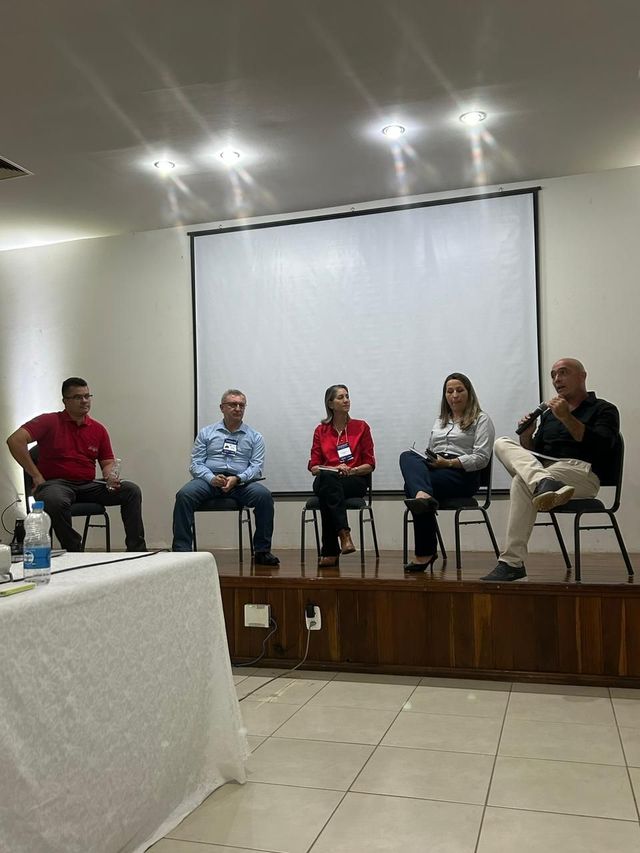
Conheça nosso App
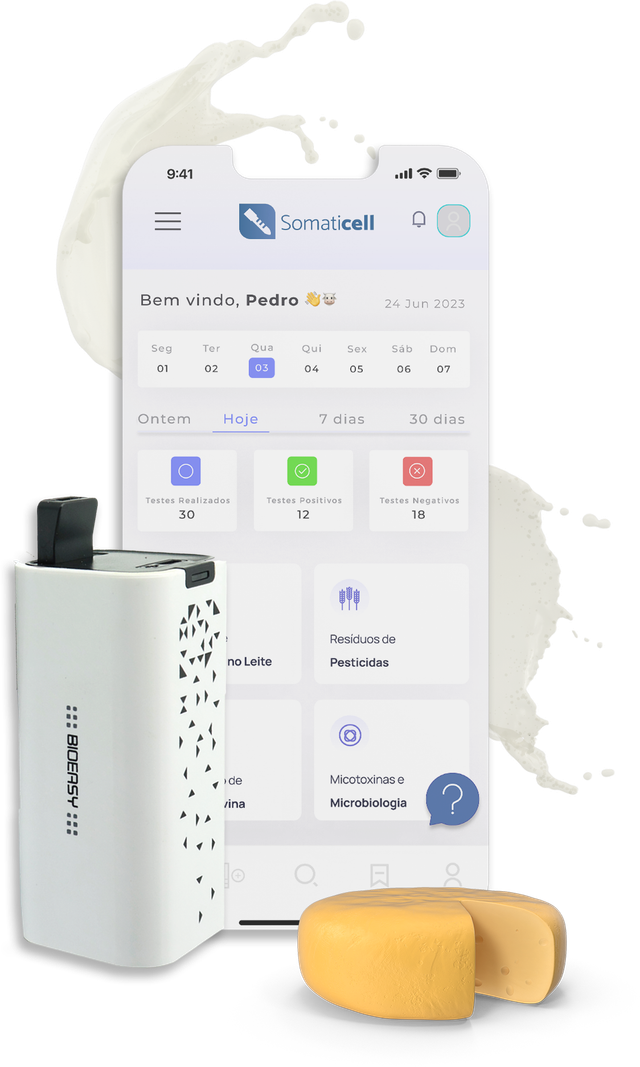
Our Educational Videos
Somaticell on Social Networks


